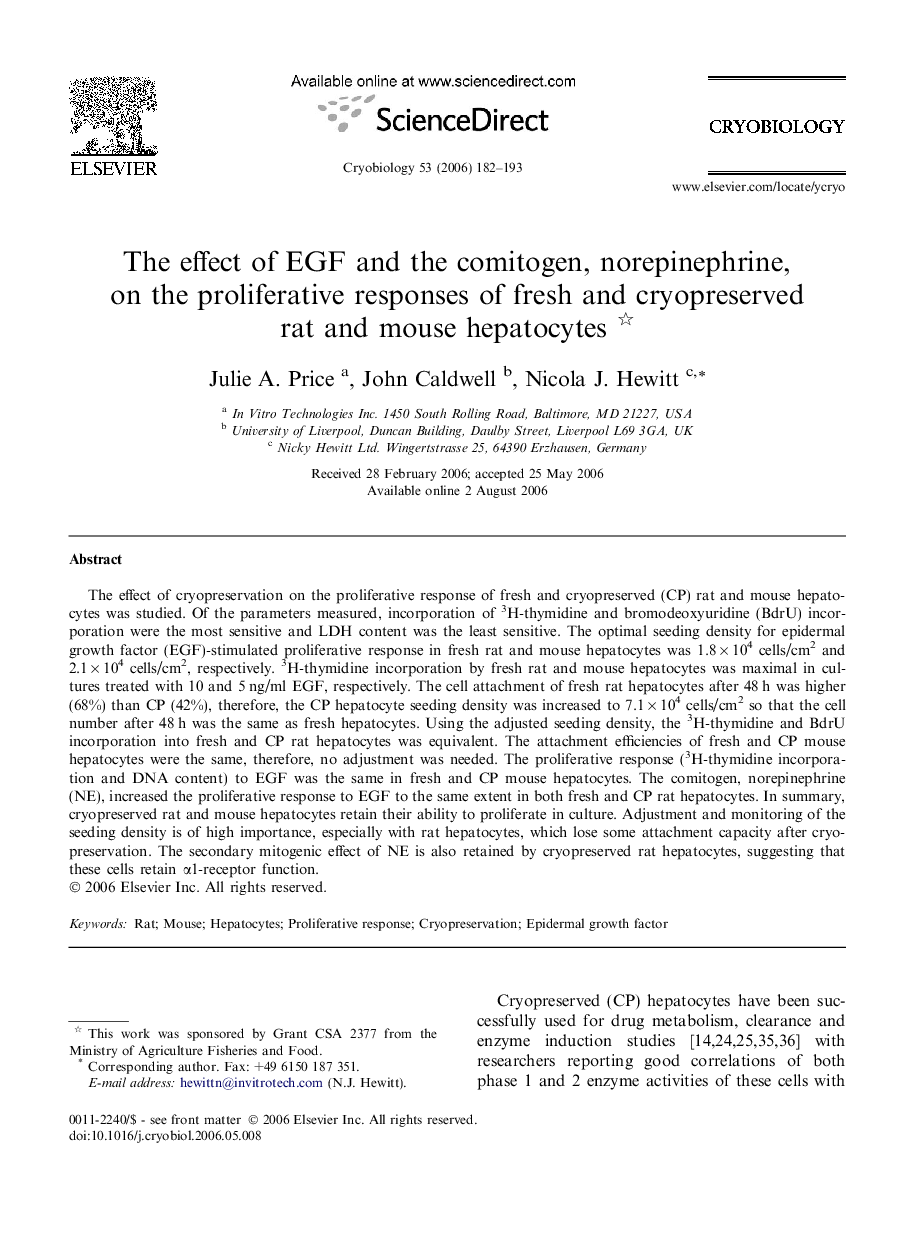| Article ID | Journal | Published Year | Pages | File Type |
|---|---|---|---|---|
| 2169149 | Cryobiology | 2006 | 12 Pages |
The effect of cryopreservation on the proliferative response of fresh and cryopreserved (CP) rat and mouse hepatocytes was studied. Of the parameters measured, incorporation of 3H-thymidine and bromodeoxyuridine (BdrU) incorporation were the most sensitive and LDH content was the least sensitive. The optimal seeding density for epidermal growth factor (EGF)-stimulated proliferative response in fresh rat and mouse hepatocytes was 1.8 × 104 cells/cm2 and 2.1 × 104 cells/cm2, respectively. 3H-thymidine incorporation by fresh rat and mouse hepatocytes was maximal in cultures treated with 10 and 5 ng/ml EGF, respectively. The cell attachment of fresh rat hepatocytes after 48 h was higher (68%) than CP (42%), therefore, the CP hepatocyte seeding density was increased to 7.1 × 104 cells/cm2 so that the cell number after 48 h was the same as fresh hepatocytes. Using the adjusted seeding density, the 3H-thymidine and BdrU incorporation into fresh and CP rat hepatocytes was equivalent. The attachment efficiencies of fresh and CP mouse hepatocytes were the same, therefore, no adjustment was needed. The proliferative response (3H-thymidine incorporation and DNA content) to EGF was the same in fresh and CP mouse hepatocytes. The comitogen, norepinephrine (NE), increased the proliferative response to EGF to the same extent in both fresh and CP rat hepatocytes. In summary, cryopreserved rat and mouse hepatocytes retain their ability to proliferate in culture. Adjustment and monitoring of the seeding density is of high importance, especially with rat hepatocytes, which lose some attachment capacity after cryopreservation. The secondary mitogenic effect of NE is also retained by cryopreserved rat hepatocytes, suggesting that these cells retain α1-receptor function.
